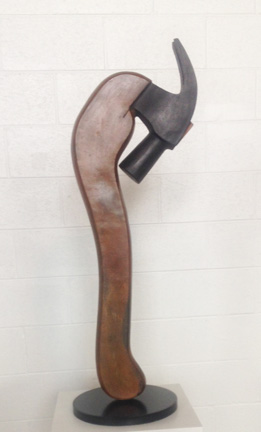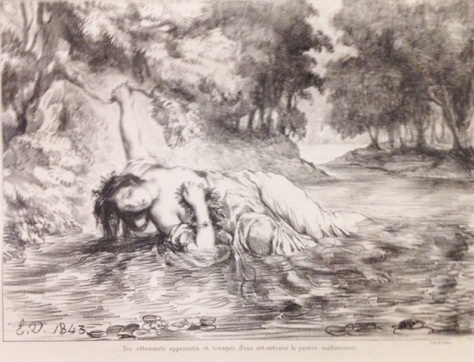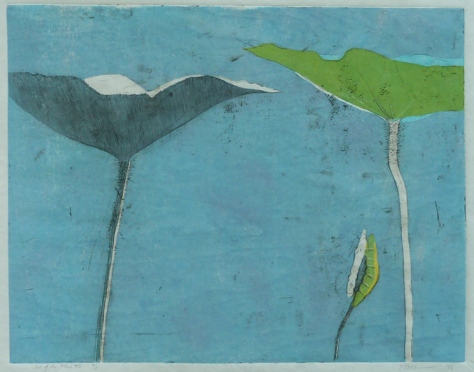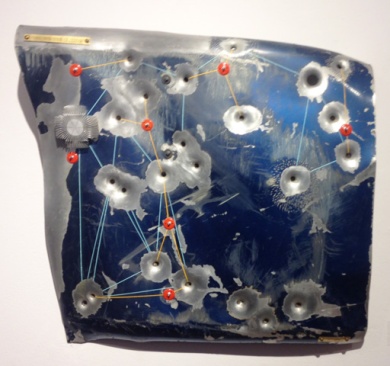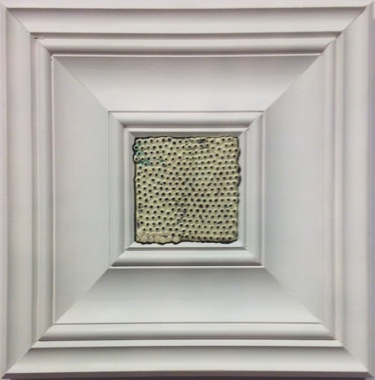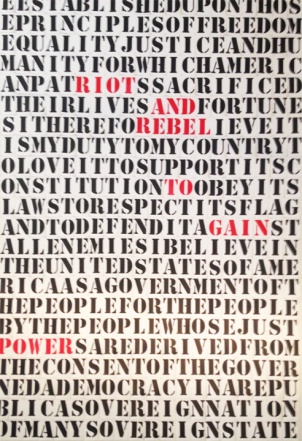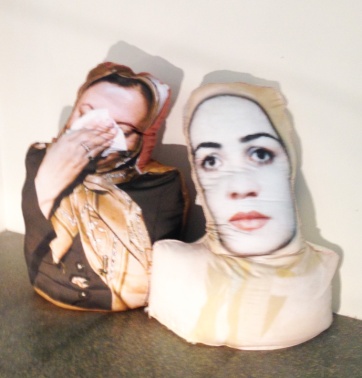
It’s that time of year–gray, dreary, damp and dark–when gallery hopping feels like a chore. But the art is out there and it must be seen, polar vortex notwithstanding. An encounter with Geometrix at Galerie Camille until February 24, can make the effort seem worthwhile, and might just get you through the worst of winter, 2018.
In their art practice, Clark Goeman, Franklin Jonas and James Benjamin Franklin take the manipulation of geometry as a point of departure. It’s hardly a new concept, but the work by these three results in remarkably divergent bodies of work and proves once again that a universe is possible within the limits of a simple premise.
Clark Goeman delivers a series of well crafted and carefully conceived objects in various media that suggest energy under pressure. Two large, aggressively corporate sculptures occupy the interior of Galerie Camille and vibrate with silent presence. The Death Star-like Black Matter is solid, monumental and threatening, while the more open and lyrical Icosahedron describes the same geometric shape in wood, minus the menace.
Goeman shows off his considerable skills in both clay manipulation and ceramic glazes with a series of fairly small, clenched objects that suggest projectiles. These weaponized artworks look vaguely dangerous, like hand grenades or land mines, and their metallic-glazed surfaces reinforce the impression. They seem as if they could explode at any moment, projecting peril far out of proportion to their size. If I saw one lying unattended on a bus seat, I might consider calling Homeland Security.

“The perfection of geometry fascinates me,” says Franklin Jonas. That may well be, but it appears to me that the true fascination of this work lies in its manipulation of color and pattern within the bounds of the constructed shapes. In The Star Project, Jonas applies saturated hues that might be ripped from a Pantone Formula Color Guide in tightly rendered stripes that follow the contours of the five-pointed figures. Idiosyncratic, insistent, pugnaciously decorative color combinations move restlessly around, intersected and interrupted by flat white shapes that violate their integrity, setting up a rhythmic counterpoint. With their buzzy optical vibration, The Star Project suggests the visual equivalent of techno music.
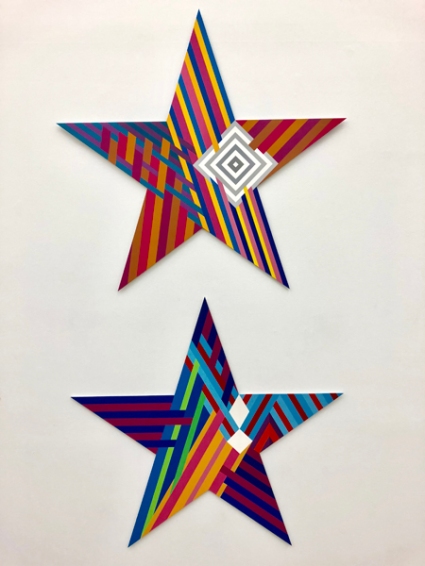
The Embryo Series projects a more serene effect with its ovoid outer shapes repeated adroitly within each of the 4 artworks. Jonas describes his color choices in The Embryo Series as referencing a “mathematical color algorithm.” He claims that “the information contained in each circle accurately predicts the color scheme of the other three.” Fortunately, it’s not necessary to understand this rather abstruse technical explanation to appreciate the visual charms of Jonas’s work.
James Benjamin Franklin takes his geometry with a playful grain of salt. Ten fairly small, eccentric shapes rest on a gallery shelf, leaning against the wall on their spindly legs. These lively, vaguely anthropomorphic figures in flat, waxy crayon colors line up like a class of restless toddlers ready for an outing. Franklin’s ingratiating pictograms add an element of humor and sly charm while remaining inscrutable. They are deceptively simple, childlike but knowing. Two larger pieces round out Franklin’s installation. A large refrigerator-shaped slab of yellow (with a handle!) made me want to open it and search for treats inside. To its right rests a red …thing, that might be a web or a window, alternately barring the way or inviting us through.

If the gray of winter and the icy damp of Detroit’s streets is beginning to get to you and a trip to someplace warm isn’t in the cards, Galerie Camille and Geometrix offers an alternate destination. A whiff of danger, a pop of color and some smart fun can help to pass the time, and pretty soon spring will be just around the corner. I hope.
For more information, visit galeriecamille.com


